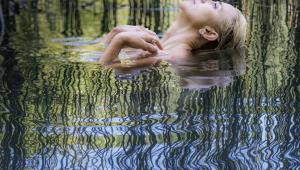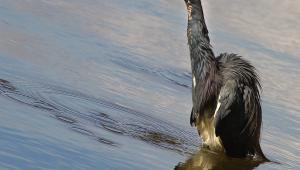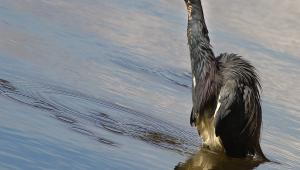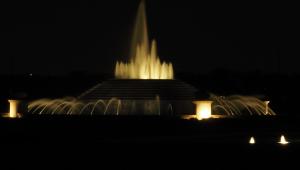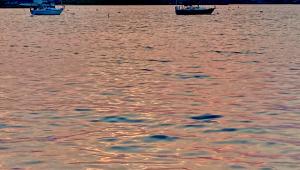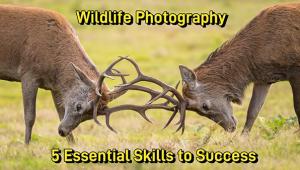Printing As Meditation
Photography is a wide-ranging field that engenders passion in its practitioners,
and like all great forms of expression creates opinions formed through experience
and reflection. In its early days one of the great debates was: Is Photography
Art? This was the subject of many essays and heated discussions among players
and spectators. Today, issues such as film vs. digital, format choices, the
validity of computer generated images, photography as exploitation or revealer,
and even the merits of ink jet vs. silver prints cause similar debate. We are
opening this department up to readers, manufacturers, and retailers--in
short, everyone who lives and breathes photography and who has an opinion about
anything affecting imaging today.
Here's how to get involved: write us an e-mail at editorial@shutterbug.com
or send us a letter with a proposed topic and a synopsis of your idea. Once
approved, we'll ask you to send us about 500-1000 words on the subject
chosen. The idea here is not to push any product or wave any flag, but to create
discussion about photo and imaging topics of the day. We reserve the right to
edit whatever you send in, although we will never edit intention or opinion
but only for length and, hopefully, for clarity. We reserve the right to publish
your work on our website as well, so you can join the archives and be a resource
for opinion for years to come.
So, get thinking and writing and share your Point of View.
--George Schaub
Editor's Note: In response to our recent editorial about photographic schools dropping traditional darkroom study from their curriculum, Professor Richard Zakia thought it an opportune time to share a chapter from Professor Ralph Hattersley's unpublished 1984 manuscript titled "Consciousness and Photography." Hattersley was a prolific author and renowned teacher who influenced a generation of artists and photographers. Permission to share this illuminating text was kindly granted by Craig Hattersley to Professor Zakia, who in turn thought that it will "ring a bell of truth with many photographers." We are very pleased he thought so and hope that it will do so for you.
M any photographers have intuitively come to see black and white printing as
a form of meditation and have decided that it is very good for people. Throughout
the world millions of people meditate on a daily basis, saying it is very life-giving
and therapeutic, for it improves mental and physical health, brings one into
a kind of mystical union with the thing being meditated on, and quiets the mind.
Above all it brings peace and a feeling of well-being. Printing as meditation
will do all these things to a considerable degree and is one of the reasons
that photography adds to your life. There are many formal meditation systems,
for example those taught by Yoga and Zen masters. Though there is no doubt that
they work, they simply aren't as available to Westerners due to a shortage
of teaching masters. Moreover, many Westerners find that Eastern modes of thought
are too alien for them.
One can learn meditation techniques from books, but this is not wise and can
even be dangerous. For example, Yoga techniques combine certain postures with
so-called yoga breathing. Gurdjieff says the latter can cause serious organic
damage if done extensively without supervision. The thing you should realize
is that Eastern meditation techniques are definitely not toys and should be
practiced only under the guidance of masters.
Fortunately, it is man's nature to meditate now and then, each person
intuitively working out a system that is effective and safe for him or her.
Indeed, there are as many systems as there are people. Not realizing what they
could do for themselves, most people don't carry out their methods very
far, though they might if they saw reasons for it.
In the material that follows I will provide reasons by showing how I personally
approach printing as a form of meditation and what I think I get from it. I
can't tell you what others do because I've never asked them. If
some of my ideas seem to fit you well you might try them. I, of course, practice
other forms of meditation as well--we all do--but I'll stick
to what I do while printing.
I nearly always print alone, this aloneness being very important to me because
it gives me freedom to be myself. Though I can work well with others I would
rather not. One of the things I find most attractive about still photography
is that it is basically a lonely art. Working alone, the photographer creates
little worlds in pictures and is entirely responsible for them, whether they
are good or bad, and tries to enter into close communion with them. This works
best if a photographer is alone. They say that God worked alone in creating
the universe, and I think it best if the photographer tries to emulate Him,
reaching into himself or herself to find the material for creating little realities.
The dim yellow light of a printing room is very conducive to meditation, for
the harsh and unchangeable presence of everyday reality is mainly obscured,
sinking into relative unimportance, to be replaced by the realities of mind
and feeling. Sometimes we see too well, and to see less well can be a welcome
relief and a kind of liberation. Many photographers have seen the magic of darkness
and indeed have come to almost worship it. It's as if in darkness we establish
contact with our primal selves, our creative centers. Out of this darkness in
the print room we create the light in our pictures. And so it was in Biblical
Creation: Out of darkness came light. In the dim light we work with God as co-creators
of reality, the reality of our prints. And this is more than just imagination
and fine talk.
I am a great believer in magic and find it everywhere I turn, magic created
by Nature as we know her, by man, and by forces as yet undiscovered. Though
I know very well the technical reasons for an image appearing on photographic
paper in a developing tray, I still like to think of it as pure magic. Indeed,
I can see it in no other way. Each time I see an image pop up out of nowhere
I am struck with wonder that man should have been able to create such a marvelous
process. In making prints I fully share in this creation, become a minor god
in my own right, and meditate now and then on the glories and responsibilities
of godliness. With a print the process of heavenly creation is made clear enough:
Out of nothing (the blank paper) comes something (the reality of an image).
From nothing, something: Did not everything come into existence that way? I've
meditated on this theme hundreds of times.
The printing process affords ample opportunity to think backwards, which is
interesting, challenging, and refreshing. When the enlarger light is turned
on you see a negative image on the easel and know that the lightest parts of
it will produce the darkest parts of a print. In dodging and burning in you
have to think backwards, holding back light to lighten an area and adding more
light to darken it. Light makes dark. In just one of my classes I found two
people who had actually seen in negative images, so there must be more of them.
One saw them just before she fainted; and there was a man who could see them
at will.
How strange it must be to have darkness and light reversed! Perhaps there are
some creatures in which this is the usual situation: How would we know? How
interesting it is to calculate precisely the amount of light to give you a desired
degree of darkness! At this point one can't help meditating on time, for
exposure time is very important in this process (along with aperture setting,
negative density, enlarger bulb intensity, and the light sensitivity of the
paper). Playing with exposure times can get to be a kind of mental dance, ritual,
or meditation.
Whereas elsewhere in photography the law of reciprocity (Exposure = Intensity
x Time) can sometimes seem a little obscure and remote, in printing it is happening
right at the tips of your fingers: and you are its master. In many ways, printing
explains all the rest of photography, making it as clear as crystal--and
most of it depends on intensity and time. A most interesting meditation theme.
Imeditate a lot on the similarities and differences between three-dimensional
reality and two-dimensional representations of it in prints, always striving
to make prints that can't be told from the real thing. In my 40 years
in photography I have seen two or three prints that came extremely close to
it but have never been able to make one myself, though I am a master of illusions.
It's impossible, of course, but the impossible often makes a fine goal.
And sometimes it actually turns out to be possible after all. There is such
a thing as photographic reality. Though it doesn't duplicate physical
reality it produces an excellent illusion of it and is highly believable as
a true record of it. I'm highly aware of how light creates the visual
reality that we know and of the cues we must use to orient ourselves in space.
Many of these cues have their counterparts in prints, and I almost constantly
meditate on them while I'm printing.


